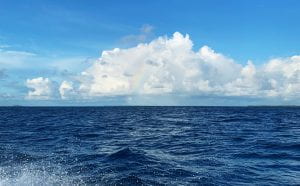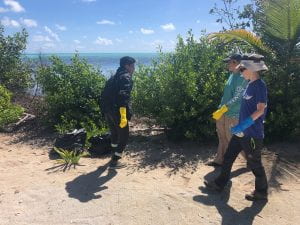





 The tropical rainforest and the coral reef are two of the most biologically diverse ecosystems on Earth, and I’ve come to appreciate how much they actually have in common despite their differences in location and appearance. Both ecosystems are incredibly productive due to consistent sunlight and warm temperatures year-round, which support high rates of photosynthesis—through dense vegetation in rainforests and through symbiotic algae in coral reefs. This productivity forms the foundation for complex food webs that can support a wide range of organisms.
The tropical rainforest and the coral reef are two of the most biologically diverse ecosystems on Earth, and I’ve come to appreciate how much they actually have in common despite their differences in location and appearance. Both ecosystems are incredibly productive due to consistent sunlight and warm temperatures year-round, which support high rates of photosynthesis—through dense vegetation in rainforests and through symbiotic algae in coral reefs. This productivity forms the foundation for complex food webs that can support a wide range of organisms.
What also stands out to me is the structural complexity in both environments. In rainforests, there are multiple layers like the canopy, understory, and forest floor, while coral reefs have intricate three-dimensional frameworks built by corals. These structures create countless microhabitats and niches, allowing many species to coexist without directly competing. The relatively stable climates of both ecosystems further encourage species to specialize in narrow ecological roles. I’ve learned that this kind of niche specialization, along with strong biological interactions such as competition, predation, and mutualism, drives coevolution and the emergence of new species over time.
Together, these factors help explain why both tropical rainforests and coral reefs harbor such immense biodiversity. Their complexity, productivity, and stability foster environments where evolution can flourish, leading to the incredible variety of life we see in these ecosystems today.
Personally, I’ve noticed similarities between the two ecosystems in terms of mutualistic interactions and how each species forms a tight connection with others, creating a highly interconnected trophic web. Both systems depend heavily on all components of their food webs, and it was amazing to witness these relationships in action. One key difference I observed was that, in the reef, most organisms relied heavily on coral for both habitat and food. The coral–algae symbiotic relationship was absolutely crucial for the health of the entire ecosystem. In contrast, the rainforest had a broader range of vertical space, with species occupying the ground, understory, and canopy. There also seemed to be more specialized interactions between specific plants and animals, such as the cecropia tree and fungi’s mutualism with ants.
This course was an amazing experience, and I learned so much more than I expected in such a short time. My favorite parts of the course were snorkeling in Glover’s Reef and seeing all the diverse species of wildlife interacting and swimming around. It’s rare to see a reef thriving the way Glover’s was, and that was an unforgettable experience—especially seeing stingrays, sharks, and so many types of fish I knew nothing about before the course. I also loved observing mutualistic relationships in the rainforest. Learning about the ants and the various ways they interact with specific trees and fungi was really cool, especially because some of these examples were straight out of textbooks—seeing them in real life was surreal. My least favorite part? Definitely the bugs! Removing several cockroaches from our room in Las Cuevas and getting eaten alive by sand flies in Glover’s were probably my least favorite moments.
Three things from this course that I know I’ll remember for a long time are the cecropia and ant mutualism, the contrast between MPA and non-MPA reef sites, and seeing glass eels. I was especially fascinated by the cecropia and ant mutualism. It was amazing how two completely different organisms could evolve to rely so closely on each other. I had never seen that kind of relationship up close before, and it changed how I think about the complexity of interspecies interactions. Visiting the marine protected areas and comparing them to non-protected sites was honestly heartbreaking. The difference was so stark—vibrant coral and active fish populations in the MPAs, and lifeless, dying coral in the non-MPAs. It made the consequences of poor environmental management feel very real to me. Finally, one of the most magical moments of the course was seeing the glass eels swimming in the open ocean. I had read about them before, but witnessing these tiny, transparent creatures in person was incredible. It reminded me how much of the ocean’s life cycle is still hidden and delicate—and how much we still have to learn.


























